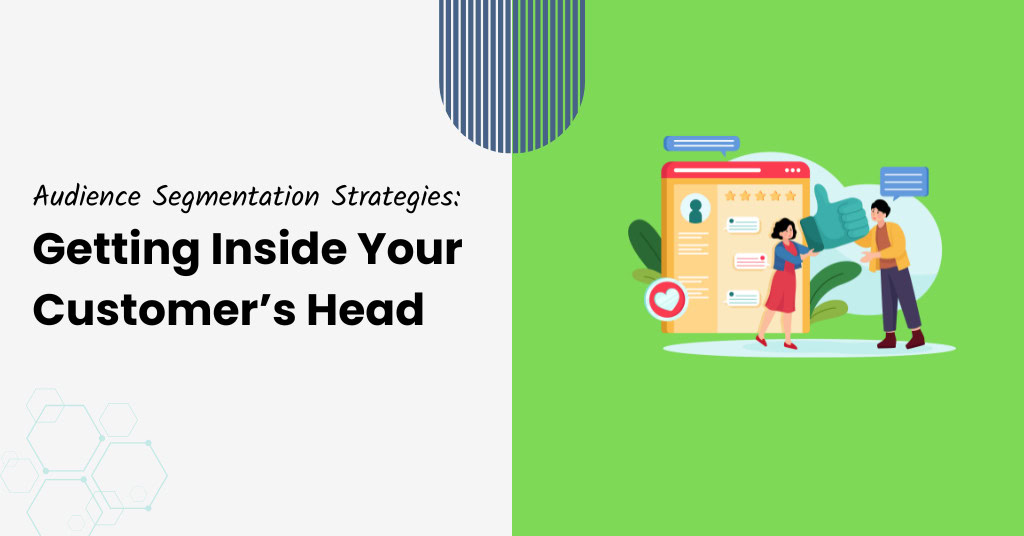Ever feel like your marketing campaigns are shouting into the void? You’re not alone.
A whopping 63% of marketers struggle to send the right message to the right audience. And in the world of ecommerce, where customers expect brands to get them, that’s a big problem.
The good news? There’s a solution and as marketers love to say – it’s not about working harder, it’s about working smarter.
That solution is audience segmentation.
Audience segmentation transforms scattershot campaigns into laser-focused strategies that connect with shoppers on a personal level.
So whether you’re trying to convert a first-time visitor or re-engage a loyal customer, segmentation ensures you’re speaking their language.
In this guide, we’re breaking down strategies tailored for ecommerce brands – no fluff, no jargon, just actionable tips to help you get inside your customer’s head.
Ready to dive in? Let’s go.
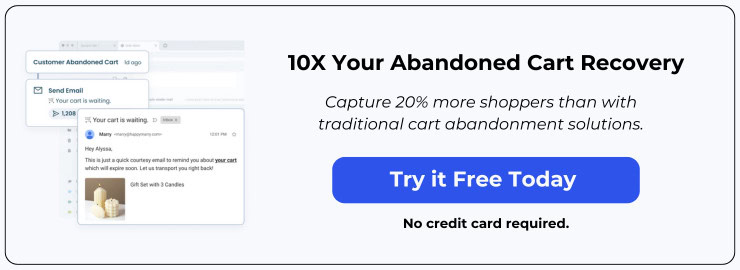
Types of Audience Segmentation: Beyond the Basics
Most people hear “audience segmentation” and think, “Oh, you mean demographics?” Eh…sort of.
Sure, demographics matter – knowing someone’s age, gender, or income is helpful but in ecommerce, where shoppers are anything but one-size-fits-all, stopping there is like building only half a bridge. You need to go deeper.
Let’s break down some segmentation types that really deliver results for ecommerce brands:
1. Behavioral Segmentation: Tracking What Shoppers Do
This is all about actions:
- Browsing habits: Who’s been checking out your “New Arrivals” page?
- Purchase history: Did they buy from your holiday sale last year?
- Loyalty activity: Are they racking up points in your rewards program?
Why it works
Behavioral segmentation helps you predict future actions based on past behavior, so you can send those “We thought you’d like this” emails they can’t resist.

Example
An online apparel store notices that customers who browse their “Winter Coats” section tend to add items to their wishlist but don’t immediately purchase.
Using behavioral data, the store creates a segment of these “wishlist browsers” and sends them a personalized email with a limited-time discount on winter outerwear.
Result? A 20% lift in conversions during the promotion.
2. Psychographic Segmentation: What Makes Shoppers Tick
Think motivations, values, and personality traits:
- Eco-conscious shoppers: Highlight your sustainable products.
- Self-care enthusiasts: Push products that make them feel good.
- Trendsetters: Showcase new arrivals and exclusive drops.
Why it works
When you understand why your customers buy, you can create campaigns that align with their mindset and values.
Example
A beauty brand segments customers who’ve interacted with their “Clean Beauty” content or purchased eco-friendly items.
They roll out a “Sustainable Favorites” email campaign, featuring refillable packaging and plant-based ingredients. The campaign achieves a 30% higher click-through rate than generic product emails.
3. Geographic Segmentation: Location, Location, Location
Not just where they live, but what that location means:
- Local events: Have a storefront? Run ads promoting a holiday pop-up.
- Climate-based targeting: Selling outerwear? Push to cold-weather regions in winter.
- International targeting: Tailor messaging to cultural nuances and holidays.
Why it works
Relevance is everything. A snowstorm in New York? Perfect time to push cozy blankets.
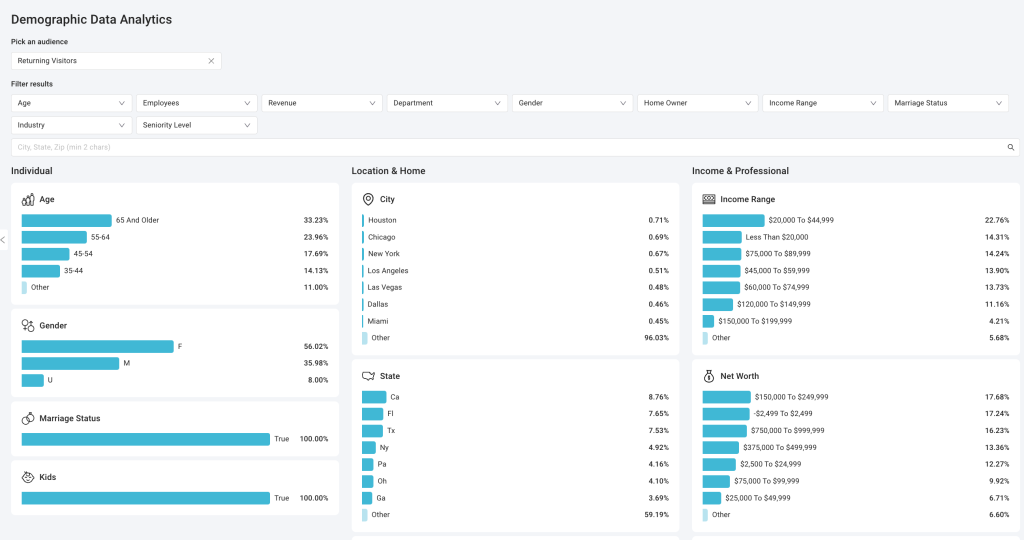
Example
A footwear brand selling winter boots targets customers in snowy regions with location-based ads on Facebook. For warmer areas, they promote water-resistant sneakers instead.
This geo-targeted approach boosts ROI on their ad spend by 25%.
4. Custom Segments for Ecommerce: Made Just for You
These segments are based on what you know about your customers:
- Power users: Your repeat buyers who can’t get enough.
- Deal seekers: The coupon hunters waiting for that discount.
- Seasonal shoppers: People who show up during big sales but ghost the rest of the year.
Why it works
Custom segments let you connect on a deeper level with the audiences that drive your bottom line.
Example
An ecommerce brand creates a segment for its “big spenders” who’ve made three or more purchases in the last six months.
They send these VIP customers early access to a Black Friday sale, driving a 40% increase in average order value compared to their standard campaigns.
The Takeaway
Audience segmentation is more than age brackets and income levels.
It’s about digging into behaviors, motivations, and context to meet your customers where they are (literally and figuratively).
And the best part? When you get it right, your shoppers feel seen, heard, and ready to buy.

How to Build a Segmentation Model That Makes Your Data Dance
Audience segmentation sounds great but how do you build a model that drives results?
It’s not as difficult as it sounds and with this step-by-step guide tailored to ecommerce brands, you will be well on your way.
Step 1: Define Your Goals
Start by asking: What do we want to achieve?
- Do you want to increase repeat purchases?
- Boost your email open rates?
- Improve ad targeting ROI?
Be specific. Instead of “improve sales,” aim for something measurable like “increase repeat purchases by 20% in Q1.”
Pro Tip: Clear goals keep your segmentation strategy focused and actionable.
Step 2: Identify Relevant Data Sources
You can’t build a great model without data. Start pulling insights from:
- Your CRM: A goldmine of customer purchase history and contact details.
- Shopify (or other ecommerce platforms): Useful for tracking order frequency, cart abandonment, and product preferences.
- Ad platforms (e.g., Facebook and Google Ads): Behavioral data on clicks, conversions, and campaign performance.
- Email marketing tools (e.g., Klaviyo): Engagement metrics like open rates, clicks, and bounce rates.
- Website visitor identification tools (e.g. Customers.ai): Contact data about your site visitors including names, emails, work information, and more.
The key is to use tools that integrate seamlessly. For example, Customers.ai integrates with multiple data sources, saving you time and headaches.
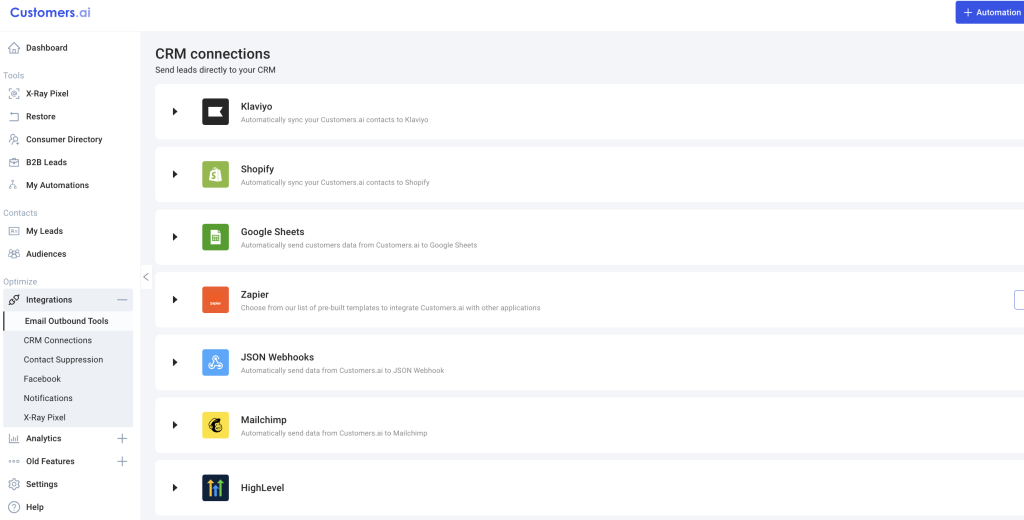
Step 3: Create and Test Your Segments
Now comes the fun part – creating your segments. Start simple and refine as you go:
- Customers who’ve purchased twice in the last six months but haven’t bought in the past 30 days.
- New shoppers who visited your site and browsed the same product category twice.
- Loyalty program members with more than 1,000 points but no recent redemption activity.
After creating your segments, test them by launching targeted campaigns for each group.
Measure metrics like click-through rates, conversion rates, and average order value, and always A/B test to see which strategies resonate most.
Step 4: Refine and Optimize Regularly
Your segmentation model isn’t “set it and forget it.” Ecommerce trends change fast, so keep evolving:
- Update segments based on real-time data (e.g., seasonal trends, product launches).
- Remove segments that underperform.
- Continuously add new criteria as you learn more about your audience.
Pro Tip: Using an identity resolution tool can help keep your customer profiles accurate and up-to-date, ensuring your segments stay relevant.
Step 5: Balance Personalization with Scale
Personalization is powerful but you can overdo it.
Don’t waste resources creating segments so niche they barely make an impact. Instead, focus on scalable groups like frequent buyers or cart abandoners and use automation tools to manage and target segments efficiently.
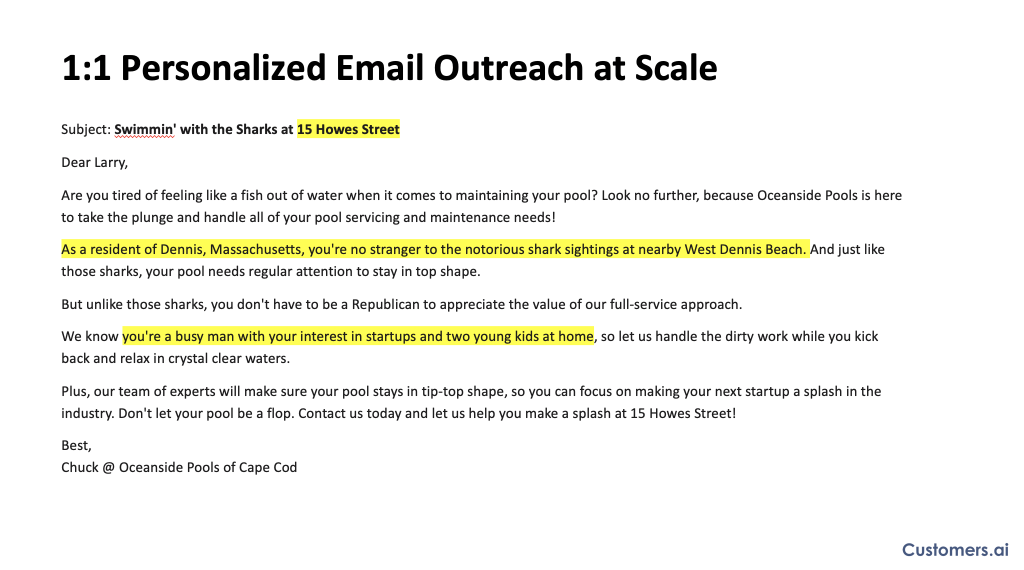
Building a segmentation model is a mix of strategy and experimentation.
Define clear goals, tap into your best data sources, and continually refine your approach. When done right, your campaigns will hit the right people, at the right time, with the right message and turn casual browsers into loyal buyers.

Email Marketing Segmentation: The Inbox Goldmine
If there’s one place where audience segmentation truly shines, it’s the inbox.
Email marketing is still one of the most effective tools for ecommerce, generating a jaw-dropping $40 for every $1 spent!
And segmentation? It can boost revenue by up to 760%. Here’s how it works and how you can maximize it.
Why Segmentation Matters in Email
Generic email blasts? Sooooo last decade.
Personalized emails can generate up to 6x higher transaction rates and segmented campaigns see 50% higher click-through rates than non-segmented ones.
That’s the kind of ROI we’re talking about!
With segmentation, you’re no longer talking at your customers, you’re speaking to them, addressing their specific needs, habits, and preferences.
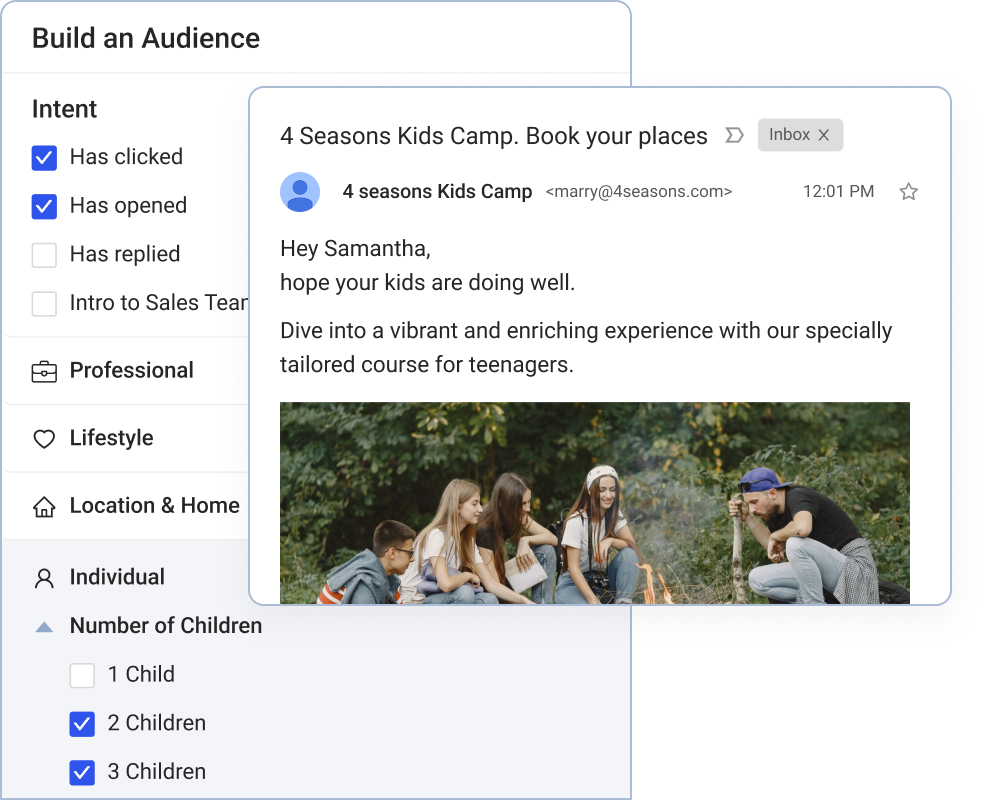
Examples of Segmented Campaigns
Welcome Series for New Subscribers:
Roll out the red carpet with a warm introduction. Share your brand’s story, showcase bestsellers, or offer a discount to encourage a first purchase.
Example: “Hey [First Name], Welcome to [Brand]! Here’s 10% Off to Get You Started.”
Product Recommendations for Past Buyers:
Use their purchase history to send curated suggestions. Think of it as the online equivalent of a personal shopper.
Example: “You Loved [Product Name]. Here’s What You’ll Love Next.”
Win-Back Campaigns for Lapsed Customers:
If someone hasn’t shopped with you in a while, give them a nudge. Incentives like discounts or loyalty points can reignite interest.
Example: “We Miss You! Here’s 15% Off to Say Welcome Back.”
Exclusive VIP Offers:
Treat your top customers like royalty. Send exclusive access to sales, new collections, or special events.
Example: “Psst… A Secret Sale for Our VIPs Only.”
First-Time Shoppers:
Convert browsers into buyers by addressing hesitation. Share testimonials, offer free shipping, or highlight easy returns.
Example: “Still Thinking It Over? Here’s Free Shipping to Seal the Deal.”
Example Email Templates
For VIP Customers:
Subject Line: “Your Exclusive Invite Awaits 🎉”
Body: “As one of our top customers, you deserve the best. Enjoy early access to our [collection/sale], just for you!”
For New Subscribers:
Subject Line: “Welcome to [Brand]! Here’s 10% Off to Get Started”
Body: “We’re so excited to have you here! Start exploring [Product/Category], and take 10% off your first purchase with code WELCOME10.”
For Lapsed Customers:
Subject Line: “Let’s Reconnect – Here’s 15% Off!”
Body: “We noticed it’s been a while. Let’s fix that. Here’s 15% off your next order—come see what’s new!”
Why Email Segmentation Works for Ecommerce
Segmentation isn’t just about delivering the right message. Like most things in marketing, it’s about timing.
The better you understand your audience’s buying journey, the more effective your campaigns will be. And with tools like Klaviyo and Customers.ai, you can automate much of the process, from tracking engagement to sending hyper-targeted emails.
Your emails will stop feeling like spam and start feeling like personal, value-packed messages your customers actually look forward to opening. That’s the inbox goldmine.

Facebook & Google Ads Segmentation: Smarter Strategies
When it comes to paid advertising, Facebook and Google are amazing tools but without segmentation, they can be unbelievably frustrating.
After all, these platforms thrive on data and are at their best when they are showing your ads to the right people. The good news? You can help them with better segmentation.
Why Segmentation Is Key in Ads
Throwing your ads at everyone is a one-way ticket to blowing your budget. Segmented campaigns, on the other hand, can cut cost-per-click (CPC) by up to 50% and boost conversion rates significantly by honing in on the customers most likely to take action.
Let’s look at how to use Facebook and Google’s segmentation superpowers to your advantage.
Facebook Ad Segmentation Strategies
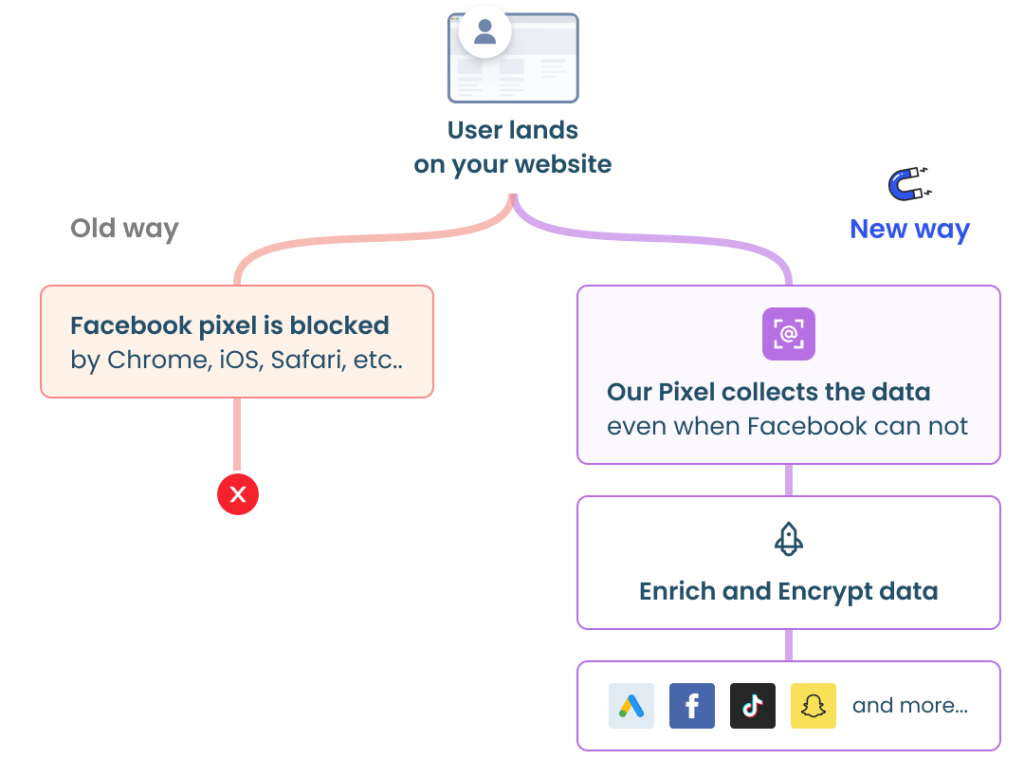
High-Intent Website Visitors:
With tools like Customers.ai, you can identify high-intent visitors who’ve interacted with your most valuable pages like product detail pages or pricing sections and send it straight to Meta. Use this data to create retargeting campaigns that move these users further down the funnel.
Example: “You’ve got a visitor who spent 10 minutes comparing products but didn’t convert. Customers.ai can help you retarget them on Facebook with an ad featuring the exact product they viewed.”
Retargeting Cart Abandoners:
Ever added something to your cart and then left? Facebook lets you swoop in with ads that remind shoppers of the products they left behind. Sweeten the deal with a discount or free shipping offer.
Example: “Hey [First Name], you left something in your cart! Complete your order now and enjoy free shipping.”
Lookalike Audiences for Top Customers:
Take your best customers—those loyal VIPs—and let Facebook find users just like them. It’s like cloning your dream audience.
Pro Tip: Narrow the lookalike audience with filters like location or age to ensure relevance.
Seasonal Segments:
Target customers who historically shop during specific times, like holiday shoppers or back-to-school buyers. Facebook’s data lets you slice and dice audience behavior for precise timing.
Read More: Why Advanced Segmentation is a Must for Facebook Advertisers
Google Ads Segmentation Strategies
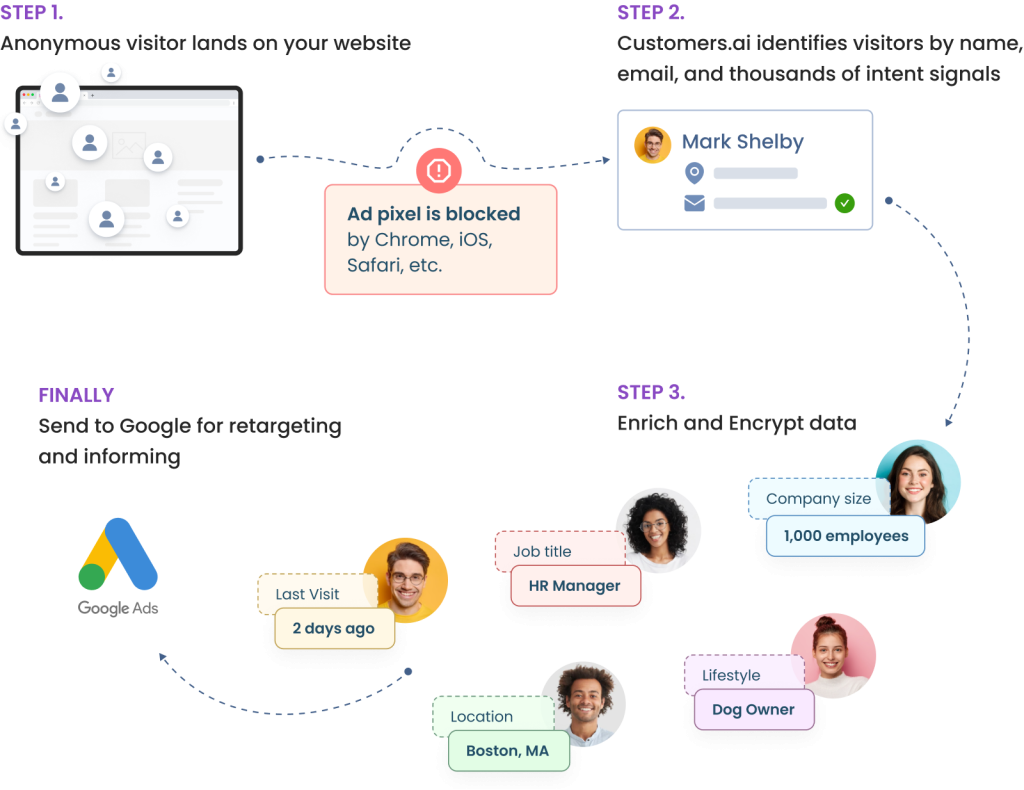
In-Market Segments:
These are people actively searching for products or services like yours. Google’s algorithm tracks this intent, so you can target audiences right when they’re ready to buy.
Example: A skincare brand targets users searching for “best moisturizers for dry skin.”
Custom Intent Audiences:
Build your own audience based on search queries, websites visited, or app downloads. Think of this as tailoring your ads for people already interested in your niche.
Pro Tip: Use keywords and URLs from your competitors to tap into their audience.
Geo-Targeting:
Google allows you to target ads by location, down to a specific zip code. Use this for local promotions or events to drive traffic where it matters.
Custom Audiences for High-Intent Visitors:
Customers.ai helps you identify segment high-intent website visitors who have engaged with key pages or taken specific actions (e.g., clicking “Add to Cart” but not checking out) and send them directly to Google Ads audiences. Use these insights to create Google Ads Customer Match Audiences targeting users ready to purchase.
Example: “A user spent time on your site’s checkout page but didn’t complete their purchase. With Customers.ai, you can show them a Google ad offering free shipping to incentivize the final step.”
Common Segmentation Mistakes and Fixes
- Over-Segmenting Your Audience:
It’s tempting to create super-narrow segments, but this can backfire. You’ll end up with small, underperforming groups and sky-high CPCs. Aim for balance—specific enough to be relevant, but broad enough to scale. - Ignoring Exclusion Lists:
Don’t waste money showing ads to people who aren’t a fit, like current customers for a prospecting campaign. Use exclusions to refine your customer targeting. - Failing to Refresh Your Audience:
Audiences change over time. Update your segments regularly to ensure your ads stay relevant.
Why It Works
When done right, segmentation in Facebook and Google Ads doesn’t just boost ROI, it turns your campaigns into customer magnets. By targeting shoppers based on their behavior, interests, and intent, you’re solving their problems.
Want to see how these strategies can work for your brand? Start experimenting, track your results, and watch your ad performance soar.
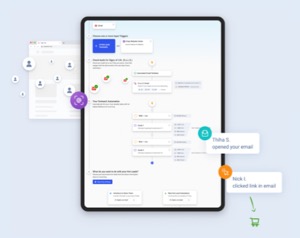
See Who Is On Your Site Right Now!
Get names, emails, phone numbers & more.
Try it Free, No Credit Card Required
The Science of Segmentation: How to Analyze, Optimize & Win
Building audience segments is just the start. True success comes from constant analysis and optimization.
Here’s how to put your segmentation strategy to work, ensuring your campaigns perform at their best.
Analysis Techniques: What to Look For
- A/B Testing:
Test variations of your campaigns to see which segments respond best. For example, compare different messaging or offers for VIP customers versus first-time shoppers. Look for differences in click-through rates (CTR), conversion rates, and return on ad spend (ROAS). - Key Metrics to Monitor:
- CTR: Are your ads grabbing attention?
- Conversion Rates: Are segmented campaigns driving purchases?
- Average Order Value (AOV): Are certain segments spending more per transaction?
- Behavioral Insights:
Dive into customer actions like abandoned carts, browsing patterns, and purchase frequency. For example, if cart abandoners click retargeting ads but don’t buy, consider adjusting your offer.
Optimization: Turning Insights Into Action
- Combine Data Insights with Customer Feedback:
Metrics tell you the “what,” but feedback tells you the “why.” Use surveys, reviews, and chat interactions to refine your segments and improve personalization. For instance, if customers from a specific segment frequently mention price as a barrier, create exclusive offers to address their concerns. - Adjust Messaging in Real Time:
Segmentation has to be dynamic as your audience’s behavior changes over time. Update campaigns based on real-time data. If you notice a spike in traffic from VIP shoppers, highlight loyalty perks or early access to products. - Leverage Tools for Deeper Analysis:
Platforms like Customers.ai can identify trends within your segments, such as which high-intent users are converting and which need additional nudges. Use these insights to fine-tune your campaigns.
Case Study: Revamping Campaigns With Segmentation Insights
A skincare brand noticed a trend among its VIP customers. They were engaging with promotional emails but rarely converting during regular sales. By analyzing the data, the brand realized these shoppers valued exclusivity over discounts.
Here’s what they did:
- Created a dedicated VIP segment.
- Offered early access to product launches instead of generic sale emails.
- Sent personalized messages highlighting their loyalty perks.
The result? A 35% increase in conversion rates for their VIP segment and a boost in repeat purchases.
The Takeaway
Segmentation isn’t a set-it-and-forget-it process.
Regular analysis and optimization turn good campaigns into great ones and by combining data insights with customer feedback and adapting your strategy in real-time, you can create campaigns that drive measurable results.

Audience Segmentation Pitfalls: What to Avoid
Even the best segmentation strategy can fall flat if you make avoidable mistakes. Let’s look at some common pitfalls that trip up ecommerce marketers.
1. Using Outdated Data
Nothing derails a campaign faster than relying on stale information. Customer preferences, behaviors, and contact details change all the time. If you’re using last year’s data, you might as well just stop.
Quick Fix: Regularly audit your data and implement automated tools to update customer profiles in real-time. Ensure your segments reflect the latest customer actions from recent purchases to browsing behaviors.
2. Relying Solely on Demographics
Demographics like age, gender, and income are useful starting points but they don’t tell the full story. Two 30-year-olds might look similar on paper but have wildly different interests and shopping habits.
Quick Fix: Go deeper with behavioral and psychographic segmentation. Analyze browsing patterns, purchase history, and motivations to create a more nuanced understanding of your audience.
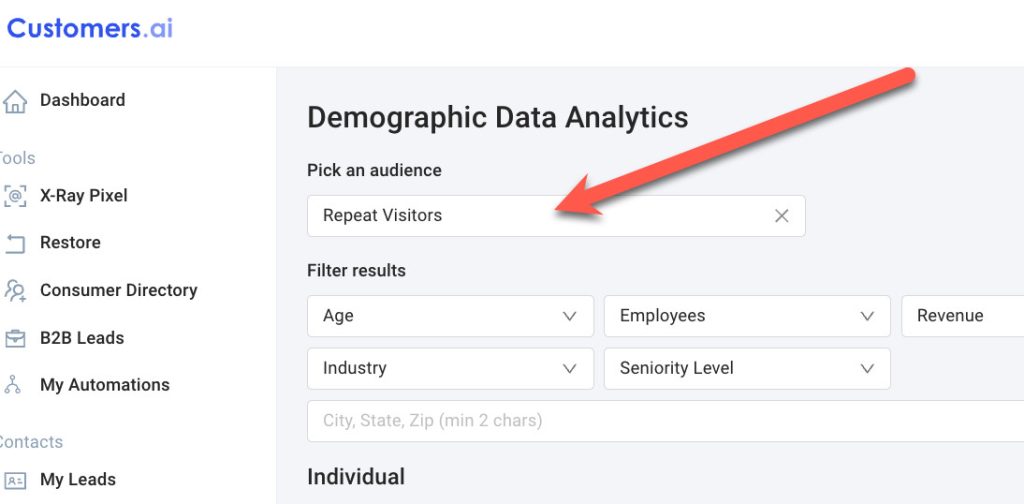
3. Neglecting to Refresh Segments Post-Campaign
It’s tempting to set up segments and leave them untouched but customer behavior changes, especially after a big sale or new product launch. Without refreshing your segments you risk targeting irrelevant audiences or missing out on new opportunities.
Quick Fix: After every major campaign, review your segments and adjust based on updated data. For instance, move one-time buyers from your “new customers” segment into a “repeat buyer nurturing” group.
4. Over-Segmenting Your Audience
While specificity is great, creating too many micro-segments can backfire. It’s harder to scale campaigns, and you might end up with segments so small they’re ineffective.
Quick Fix: Focus on balance. Use a combination of broad, scalable segments (like “frequent buyers”) and a few niche groups (like “VIP subscribers”) that align with your business goals.
5. Ignoring Privacy and Consent
With tightening privacy regulations like GDPR and CCPA, mishandling customer data can damage your brand’s reputation and lead to hefty fines.
Quick Fix: Make sure you’re transparent about how you’re collecting and using customer data. Always obtain consent and provide easy opt-out options to maintain trust and compliance.
Key Takeaway
Audience segmentation isn’t a “set it and forget it” strategy that requires up-to-date data, thoughtful analysis, and regular maintenance. Avoid these common pitfalls and you’ll create segments that truly connect with your customers and drive measurable results.

Tools of the Trade: Must-Have Platforms for Audience Segmentation
Having the right tools in your corner can make audience segmentation faster, easier, and way more effective.
Here’s a rundown of the top audience segmentation platforms for ecommerce brands and how to choose the best fit for your business.
1. Visitor Identification Platforms: Customers.ai
Visitor identification is the advantage your business didn’t know existed.
Customers.ai combines advanced segmentation, real-time customer insights, and automation to help ecommerce brands connect with high-intent audiences.
From identifying website visitors most likely to convert to creating hyper-specific ad audiences, Customers.ai streamlines your marketing efforts while maximizing ROI.
It’s especially powerful for brands leveraging multi-channel campaigns and looking to unify customer data across platforms.
Here is how to up your segmentation game with Customers.ai.:
1. Sign up for a free account
If you don’t already have a Customers.ai account, sign up here (no credit card is required) and connect your business.
2. Install the x-ray pixel on your site
Installing the website identification x-ray pixel is easy and can be done through Tag Manager, Shopify, WordPress, and more
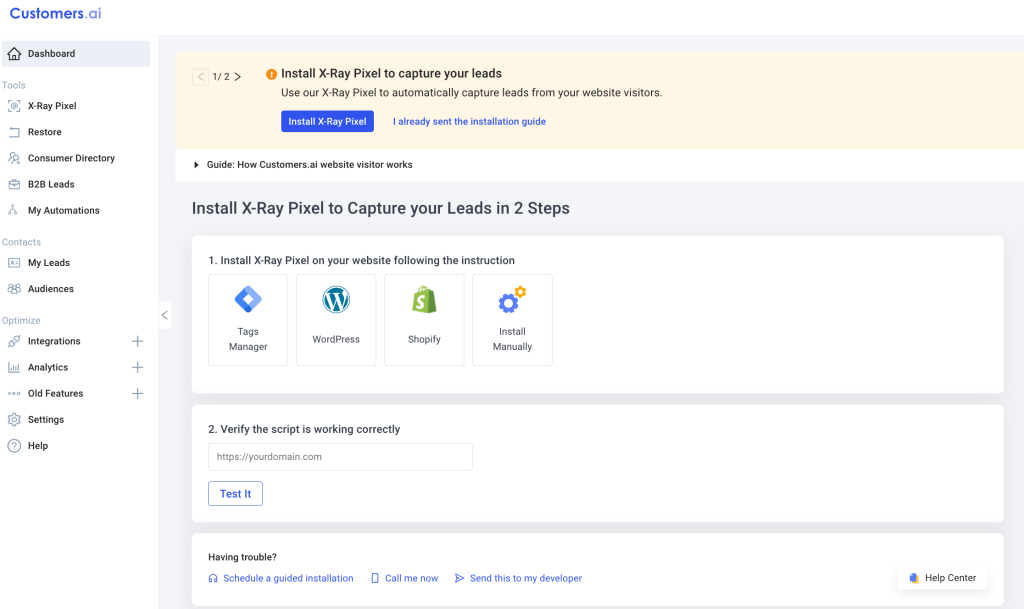
3. Verify the x-ray pixel is firing
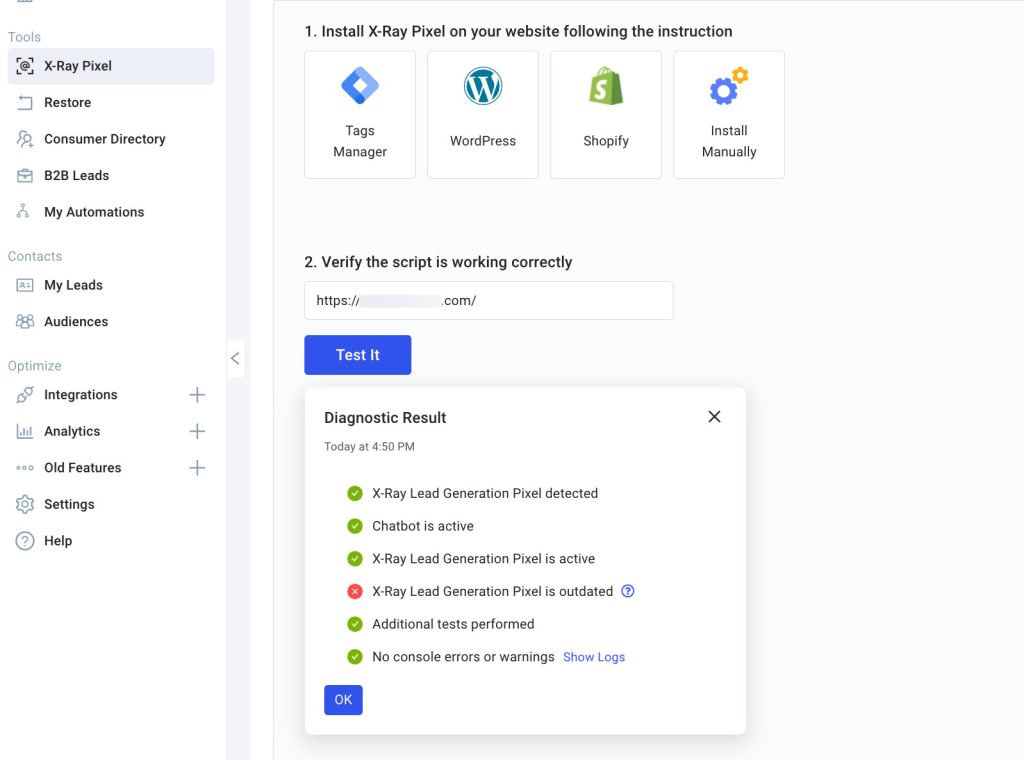
4. Start building your custom audiences
That’s it! Once the pixel is installed and verified, you can start identifying your website visitors and building your audience segments.
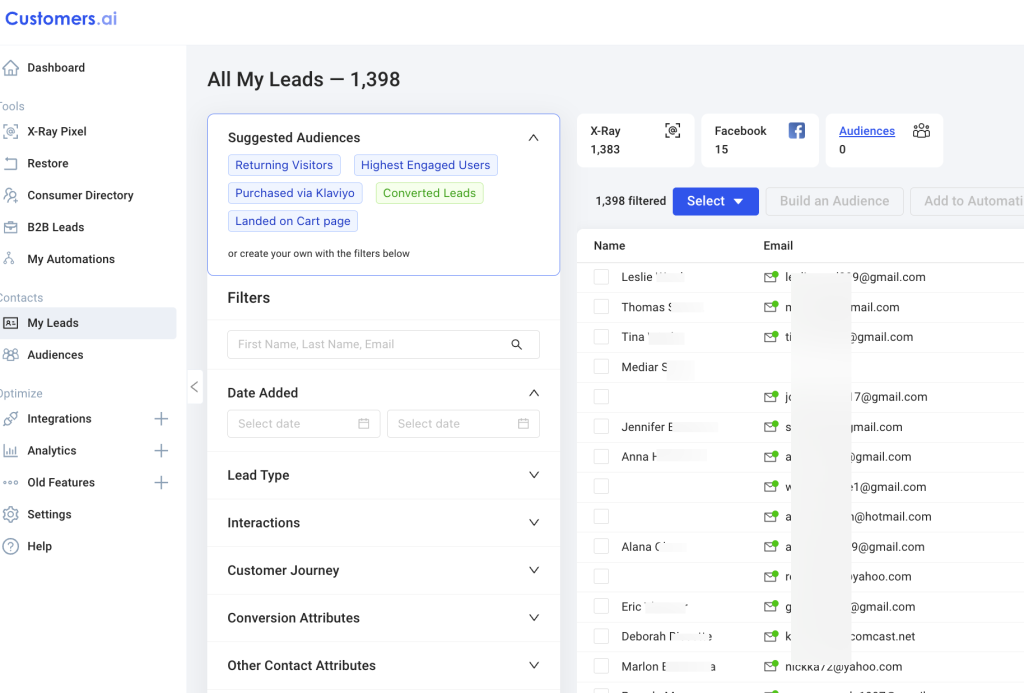
And with the highest capture rate in the industry, you should start seeing visitors immediately.
2. Email Marketing Platforms: Klaviyo and Mailchimp
Email is still a segmentation powerhouse and tools like Klaviyo and Mailchimp take it to the next level.
- Klaviyo: Perfect for ecommerce, it integrates seamlessly with platforms like Shopify to track purchase history, automate email flows, and personalize messaging.
- Mailchimp: Great for smaller brands or beginners, offering easy-to-use segmentation features for newsletters, drip campaigns, and promotions.
3. Ad Platforms: Facebook Ads Manager and Google Ads Audience Builder
- Facebook Ads Manager: With robust audience tools, Facebook lets you segment based on interests, behaviors, and lookalike audiences. Add Customers.ai for retargeting high-intent visitors across Facebook and Instagram.
- Google Ads Audience Builder: Custom intent audiences and in-market segments help you target users ready to buy. Geo-targeting and detailed demographics make it a must-have for paid search and display campaigns.
4. CRM Systems: HubSpot and Salesforce
A CRM is the backbone of your customer data, and tools like HubSpot and Salesforce make segmentation a breeze.
- HubSpot: Ideal for small to medium-sized businesses, HubSpot’s segmentation tools allow you to filter customers by purchase history, engagement levels, and more.
- Salesforce: Built for scalability, Salesforce offers powerful segmentation features for enterprise-level brands managing complex customer journeys.
5. Customer Data Platforms (CDPs): Segment and Bloomreach
- Segment: A CDP that collects data from all your platforms and funnels it into a single view of the customer, making it easy to create detailed audience segments.
- Bloomreach: Designed for ecommerce, Bloomreach specializes in personalizing customer experiences with AI-driven segmentation and predictive analytics.
How to Choose the Right Tool
Not every platform will suit every brand. Here’s a quick guide to help you pick:
- Small Businesses: Start with tools like Mailchimp and HubSpot for simple segmentation and email automation.
- Mid-Sized Brands: Step up with platforms like Klaviyo and Segment for more advanced features and integration options.
- Enterprise Brands: For complex, multi-channel campaigns, invest in Customers.ai, Salesforce, and Bloomreach to handle large-scale data and personalization needs.
By choosing the right tools for your size and goals you’ll be able to create meaningful audience segments that drive better engagement, stronger ROI, and a personalized customer experience.

Bonus: Custom Segmentation Strategies for DTC Brands
DTC brands thrive on understanding their customers deeply and custom segmentation allows you to tailor campaigns that speak directly to unique shopper needs and behaviors, giving you a competitive edge.
Let’s dive into strategies specifically designed for DTC success.
1. Using Subscription Data for Upselling Opportunities
For brands offering subscriptions, your customers’ behavior offers a goldmine of insights:
- Segment by Subscription Stage: Identify new subscribers, regular subscribers, and churn risks.
- Upsell Opportunities: Promote add-ons or premium plans to regular subscribers based on their engagement.
- Example: A DTC skincare brand targets subscribers of their basic plan with an email showcasing their premium “anti-aging” line, complete with a personalized discount.
2. Social Media Audience Overlap for Targeted Ads
Your social media followers aren’t just engaging with your content, they’re also signaling purchase intent. By segmenting audiences with tools like Customers.ai, you can find overlapping interests and behaviors to run hyper-relevant ads.
- Create Custom Audiences: Use data from high-intent website visitors and social followers to craft ad campaigns that align with shared interests.
- Example: A DTC fitness brand retargets Instagram followers who’ve visited their “new arrivals” page but haven’t purchased, using dynamic product ads featuring the items they browsed.
3. Seasonal/Event-Based Segmentation
Seasonal shoppers are predictable and primed for offers when the timing is right. Segment your audience based on shopping habits around events like Black Friday, Valentine’s Day, or back-to-school season.
- Early-Bird Shoppers: Engage deal-hunters who browse sales well before the event.
- Last-Minute Buyers: Send time-sensitive offers to procrastinators in the final days.
- Example: A DTC apparel brand segments past Black Friday buyers to send exclusive early access offers, boosting conversions before the rush.
Actionable Checklist: Creating a Custom Segmentation Strategy for DTC
- Define Your Goal: Are you upselling, acquiring new customers, or driving seasonal sales?
- Identify Key Data Points: Look at subscription status, social media behavior, and past purchase trends.
- Build Segments Based on Actions: Create groups like “VIP subscribers,” “cart abandoners,” or “seasonal deal-seekers.”
- Personalize Your Campaigns: Tailor your messaging to each segment with relevant offers, products, and timing.
- Test and Optimize: A/B test different approaches to refine what works for each group.
Custom segmentation lets DTC brands go beyond the basics, delivering campaigns that resonate deeply with specific customer groups.

The Final Word: Get Personal, Get Profitable
Audience segmentation isn’t just a marketing tactic. It’s truly the foundation of ecommerce success!
When you know your audience, you can connect with them in ways that feel personal, relevant, and impossible to ignore. Segmentation transforms your campaigns from generic to genius, boosting engagement, conversions, and customer loyalty along the way.
The best part? You don’t need to overcomplicate things!
Start small by analyzing a few key segments like first-time buyers or VIP customers and refine as you go. With the right tools, strategies, and a commitment to understanding your customers, segmentation can unlock powerful growth for your brand.
It all starts with knowing your audience. Now go out there, build those segments, and watch your ecommerce success soar!
Ready to take your marketing to the next level?
Get your free trial and start building your own custom audience segments. We’ll even give you 500 contacts free to start!

See Who Is On Your Site Right Now!
Get names, emails, phone numbers & more.
Try it Free, No Credit Card Required
FAQs: Audience Segmentation in Ecommerce
1. What is audience segmentation, and why is it important?
Audience segmentation is the process of dividing your customer base into smaller groups based on shared characteristics, behaviors, or preferences. This helps you deliver more personalized, relevant marketing messages. In ecommerce, segmentation increases engagement, improves conversion rates, and builds stronger customer loyalty.
2. How does audience segmentation improve email marketing?
Segmentation ensures your email campaigns reach the right people with the right message. For example, you can target new subscribers with welcome emails, send personalized product recommendations to loyal buyers, or win back lapsed customers with special offers. Segmented email campaigns have been shown to generate 50% higher click-through rates than non-segmented ones.
3. What are the main types of audience segmentation?
There are several types of segmentation you can use:
- Demographic: Age, gender, income, or education level.
- Behavioral: Shopping habits, purchase history, or loyalty status.
- Psychographic: Interests, values, or lifestyle.
- Geographic: Location-based targeting like cities, regions, or countries.
- Custom: Unique to your brand, like VIP customers or seasonal shoppers.
4. How can audience segmentation reduce ad spend?
By focusing your ads on specific, high-intent audiences, segmentation eliminates wasted ad spend on customers who aren’t likely to convert. For example, instead of showing generic ads, you can target people who have previously browsed your site or purchased similar products. This precision lowers cost-per-click (CPC) and increases return on ad spend (ROAS).
5. What tools are best for audience segmentation?
Some of the best tools include:
- Email marketing platforms: Klaviyo, Mailchimp.
- CRM systems: HubSpot, Salesforce.
- Ad platforms: Facebook Ads Manager, Google Ads audience builder.
- Customer data platforms (CDPs): Segment, Customers.ai.
Each tool has unique strengths, so choose one based on your goals, budget, and integration needs.
6. Can small ecommerce businesses benefit from segmentation?
Absolutely! Segmentation isn’t just for big brands. Small businesses can use basic tools like Mailchimp or Shopify analytics to create simple segments, such as frequent buyers or first-time visitors. Even small-scale segmentation can drive more effective campaigns and boost customer loyalty.
7. How do I start segmenting my audience?
Start with these steps:
- Identify your goals, such as increasing repeat purchases or reducing cart abandonment.
- Analyze your data sources, like your CRM, Shopify, or ad platforms.
- Create segments based on specific behaviors or characteristics.
- Test your segments with targeted campaigns and adjust based on results.
8. What’s the difference between deterministic and probabilistic segmentation?
Deterministic segmentation uses exact matches, like an email address, to group customers. It’s highly accurate but relies on consistent identifiers. Probabilistic segmentation uses algorithms and patterns to predict relationships between data points. While less precise, it’s useful for larger, less-structured datasets.
9. How does segmentation impact customer experience?
Segmentation allows you to personalize your marketing, making customers feel understood and valued. For example, sending tailored product recommendations or exclusive offers based on purchase history improves engagement and builds loyalty. Personalized experiences are key to standing out in ecommerce.
10. What role does data accuracy play in segmentation?
Data accuracy is essential for effective segmentation. Outdated or incorrect data can lead to mistargeted campaigns, wasted ad spend, and poor customer experiences. Regularly updating and auditing your data ensures your segments stay relevant and actionable.
11. Can segmentation improve Google Ads performance?
Yes! Google Ads segmentation allows you to target in-market audiences, create custom intent audiences, and refine campaigns with geographic filters. This helps you focus on users actively searching for your products, leading to higher click-through rates and conversions.
12. How can segmentation improve retention rates?
By segmenting your audience, you can tailor retention strategies to specific groups. For example, offer exclusive discounts to VIP customers or send win-back campaigns to lapsed buyers. Segmentation ensures your messaging resonates, keeping customers engaged and coming back.
13. What’s a good segmentation strategy for seasonal shoppers?
Segment your audience based on past seasonal behaviors, like Black Friday buyers or holiday shoppers. Create early-bird segments for deal-seekers and last-minute segments for procrastinators. Tailor your messaging to each group’s preferences and timing for maximum impact.
14. How often should I refresh my audience segments?
You should refresh your segments after major campaigns or when new data becomes available. For example, after a holiday sale, update your segments to reflect new buyers or changes in behavior. Regular updates keep your targeting accurate and effective.
15. Can segmentation help with upselling and cross-selling?
Definitely! By analyzing purchase history and behaviors, you can identify opportunities to upsell higher-value products or cross-sell complementary items. For example, suggest a matching accessory to someone who recently bought a handbag.
16. How does segmentation work with Facebook Ads?
Facebook Ads Manager lets you create custom audiences based on behaviors, demographics, and interests. Use lookalike audiences to find new customers similar to your best buyers or retarget cart abandoners with product-specific ads.
17. What’s the biggest mistake marketers make with segmentation?
The biggest mistake is over-segmenting. Creating too many micro-segments can make campaigns difficult to scale and manage. Focus on meaningful, actionable segments that align with your goals and keep your targeting effective.
18. How can segmentation improve email open rates?
Segmented email campaigns deliver content that’s relevant to the recipient, increasing the likelihood of them opening and engaging. For example, a personalized discount for a loyal customer is far more enticing than a generic promotion.
19. How does segmentation affect conversion rates?
Targeting specific segments ensures your messaging aligns with customer intent, leading to higher conversions. For example, a retargeting ad for cart abandoners can convert at a much higher rate than a generic ad shown to a broad audience.
20. What metrics should I track to measure segmentation success?
Monitor metrics like click-through rates, conversion rates, and return on ad spend (ROAS). For email campaigns, track open rates and engagement. These metrics show how well your segmentation strategy is working and where you can improve.
21. Is segmentation necessary for social media marketing?
Yes, social media platforms like Facebook and Instagram thrive on segmentation. Targeting specific audiences based on interests, behaviors, or interactions ensures your content reaches the right people, improving engagement and ad performance.
22. How do I personalize campaigns for first-time shoppers?
Create a segment for first-time visitors and craft campaigns that address their needs. For example, share testimonials, highlight easy returns, or offer a discount on their first purchase to encourage conversion.
23. Can segmentation improve customer lifetime value (CLV)?
Absolutely. By tailoring campaigns to nurture long-term relationships—like upselling to regular buyers or rewarding loyal customers—you can increase the average revenue each customer generates over time.
24. How do I know if my segmentation strategy is working?
Evaluate your results using A/B testing and key metrics. If segmented campaigns consistently outperform general ones in terms of engagement, conversion, or ROI, your strategy is on the right track.
25. What’s the role of segmentation in customer-centric marketing?
Segmentation puts the customer at the center of your strategy by delivering personalized experiences. By understanding and addressing their unique needs, preferences, and behaviors, you create meaningful connections that build trust and loyalty.
